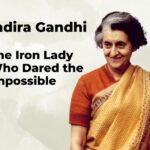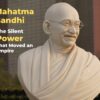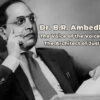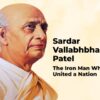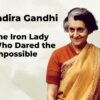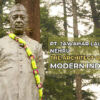When the British left India in 1947, they didn’t leave behind a clean map — they left behind 562 princely states, chaos, and deep wounds of Partition.
Who would bring all of this together?
One man. One mind. One iron will.
Sardar Vallabhbhai Patel — the man who stitched India with steel.
Known as the Iron Man of India, Patel didn’t fight wars with guns — he fought with grit, diplomacy, and an unshakable belief in one India.
He didn’t crave the spotlight, but his actions built the very foundation of the country we live in today.
Humble Beginnings, Mighty Spirit
Vallabhbhai Patel was born on 31st October 1875 in Nadiad, Gujarat, in a farmer’s family. He was no child prodigy — in fact, people thought he would live an ordinary life.
But inside him was a quiet fire, a sharp brain, and a steel resolve.
He educated himself with borrowed books, studied law in England, and returned not to earn riches, but to serve his people.
Patel was deeply influenced by Mahatma Gandhi, and once he joined the freedom movement, there was no turning back. He led non-violent farmer protests in Gujarat, earning the title “Sardar” — leader.
He was calm in speech but fierce in action.
The Unifier of India
When India gained independence in 1947, the biggest threat wasn’t just the British — it was disunity.
The British had left 562 princely states to decide whether they wanted to join India, Pakistan, or stay independent.
It was a recipe for chaos.
Patel, as India’s first Home Minister and Deputy Prime Minister, took charge of uniting the country — without war.
He personally persuaded, negotiated, and sometimes firmly demanded the accession of these states. He convinced kings, nawabs, and maharajas to join one India.
Within a year, Patel and his secretary V.P. Menon integrated:
- Hyderabad (which had its own army)
- Junagadh (which tried to accede to Pakistan)
- Kashmir (a flashpoint still today)
- And hundreds more…
No guns. No bloodshed. Just pure willpower and brilliant diplomacy.
“My only desire is that India should be a good producer and no one should be hungry, shedding tears for food in the country.” – Sardar Patel
The Man Behind the Curtain
Patel was never a man of speeches — he was a man of results.
While Nehru became Prime Minister, and Gandhi became the Father of the Nation, Patel quietly built the spine of independent India:
- He created the Indian Civil Services (IAS), which still runs our country.
- He ensured law and order during the chaos of Partition.
- He laid the foundation for modern Indian unity. He never complained. He never sought credit.
He was, in every sense, the guardian of India.
Tough When Needed, Tender at Heart
Though known as the Iron Man, Patel was not cruel — he was compassionate. He just believed that emotions shouldn’t weaken duty.
During Partition, while India was burning, Patel worked day and night to protect refugees, restore peace, and organize relief.
He loved India like a father loves his family — with discipline, protection, and silent sacrifice.
Legacy Larger Than Life
Sardar Patel passed away on 15th December 1950, just three years after independence.
But his dream — Ek Bharat (One India) — lived on.
In 2018, India paid tribute to him with the Statue of Unity, the tallest statue in the world (182 meters), standing in Gujarat. It’s not just a statue — it’s a reminder of strength, unity, and vision.
“Take to the path of dharma – the path of truth and justice. Don’t misuse liberty. Don’t sow seeds of hatred in the name of religion.”
His words still guide the soul of India.
Conclusion
Sardar Vallabhbhai Patel wasn’t loud, but his actions echo forever. He didn’t fight for power — he fought for unity.
He wasn’t the face of India’s freedom — but he was the force that held it together.
He taught us that true leadership is silent, focused, and unbreakable.
As long as India stands united, Sardar Patel will stand in its heart — as the man who didn’t just dream of India, but built it with his bare hands and iron heart.



